The history of Caldwell County actually begins on a sad note with a large group of people looking for a place to escape religious persecution and somewhere they could call home. The Mormon Saints under the direction of their “prophet” leader Joseph Smith, Jr. had been exiled from Independence, Missouri.
They had fled to Clay County for safety and were at first treated with kindness and respect. However, Clay County citizens offered their county only as a temporary refuge for the Latter-Day Saints. They were anxious for them to move on!! When vigilantes began gathering in large numbers and a county war seemed imminent, Clay’s leading citizens met with Mormon leaders and asked them to leave the County.
One of the influential residents in Liberty was one Alexander W. Doniphan, a representative elect of Clay County. He saw a need to protect the innocent women and children so he prepared and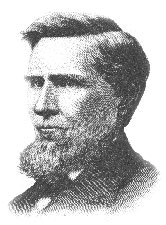 introduced into the legislature a bill to organize a county designated specifically for the Mormon saints. (It was named after Captain Matthew Caldwell, who was General Doniphan’s father’s respected commander in the Revolution.) [A Brief History of Caldwell County compiled by Charlene Ward]
introduced into the legislature a bill to organize a county designated specifically for the Mormon saints. (It was named after Captain Matthew Caldwell, who was General Doniphan’s father’s respected commander in the Revolution.) [A Brief History of Caldwell County compiled by Charlene Ward]
Some of the settlers in the area argued that Mormon settlements would “retard the prosperity of the county, check future emigration of any other class except the Mormons and disturb the peace of our community”. As a result of this opposition, the proposed boundaries for Caldwell County were reduced by more than half forming a second county to the north called Daviess. Most of the non-Mormon settlers in Caldwell, about twenty in number, sold their farms and moved out.
The Northern part of Ray county was sparsely inhabited. It was an ideal place for the saints to live in freedom. Even though it was mostly rolling prairie, there were lush grasses, plenty of water and excellent hunting. The land was ideal for the industrious pioneers. They had already been hardened by trials. Their faith in God, and their zeal for the new gospel they had found would strengthen them for the work ahead. The land could be purchased for a small amount of money. Most considered it wasteland. Awaiting the approval by the legislature, some saints moved to the sparsely populated area in Ray County along the Crooked River. A sizeable settlement of Mormons developed in the Rock Ford area.
Some came ahead and began the work of preparing a place for the new inhabitants. One of them was Jacob Haun, and his family. he began construction on the famed “Haun’s Mill”. (The mill was built in 1834.)
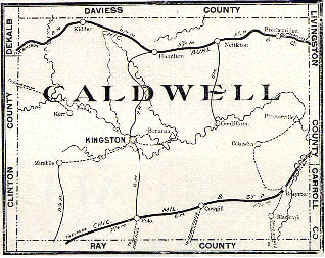 On DECEMBER 26, 1836, CALDWELL COUNTY WAS BORN!!! A location between Goose Creek and Shoal Creek was selected for the future county seat. They would call it “FAR WEST” as it lay in the western part of the county. In Far West, the saints built some 200 homes, several dry good stores and groceries, half a dozen blacksmith shops, two hotels and a printing office. Residents excavated and laid the foundation for a temple and erected a large school building on the Town Square for use as a courthouse, town hall and temporary church.
On DECEMBER 26, 1836, CALDWELL COUNTY WAS BORN!!! A location between Goose Creek and Shoal Creek was selected for the future county seat. They would call it “FAR WEST” as it lay in the western part of the county. In Far West, the saints built some 200 homes, several dry good stores and groceries, half a dozen blacksmith shops, two hotels and a printing office. Residents excavated and laid the foundation for a temple and erected a large school building on the Town Square for use as a courthouse, town hall and temporary church.
Cooperation and trust replaced the suspicions of the past as relations between the Mormons and Missourians improved remarkably throughout 1837 and early 1838. [See Brief History of the Church of Christ of Latter Day Saints, 1839] The Mormon population in Missouri eventually reached 10,000 and Caldwell County became the largest county in Western Missouri. By the fall of 1838, Far West was the hub of community activity extending throughout Caldwell, encompassing nearly 2,000 farms over approximately 250,000 acres purchased from the Federal Government. The rapid influx of Mormons, however, alarmed the older settlers, especially those who had purchased land or town lots in areas they hoped to develop. The developing Mormon enterprises also threatened to displace established merchants and businesses, especially in their trade with Fort Leavenworth. As 1838 wore on, relations between church members and Missouri citizens began a downward spiral. A clash of cultural attitudes set the stage for trouble. Distorted reports and rumors circulated by both camps. Unlawful assemblies of citizens formed on both sides to protect perceived local interests. Some Missourians proposed to drive the Mormons from the state.
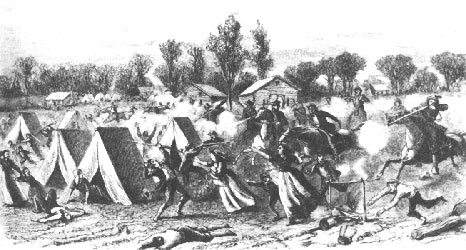
Battles ensued, leaving many Mormons dead and wounded eventually leading to Governor Lilburn Boggs issuing an extermination order “to exterminate the Mormons, not excepting the women and children, and burn their houses and otherwise destroy their property”. [History of Caldwell and Livingston Counties, entered as an act of Congress 1885, in the office of the librarian of Congress at Washington] The Mormons left peacefully in the bitter cold and winter of 1838 and early 1839, leaving Far West a virtual ghost town. “Beyond the memories, all that physically remains of Far West today are four cornerstones of the envisioned Lord’s house or temple at the heart of the former community.” The Church of Jesus Christ of Latter-Day Saints (the Mormons) purchased the site and own it today. Markers and cornerstones have been erected there recording its regrettable history.
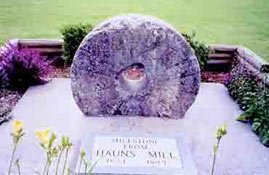
Caldwell County has had five courthouses, the first being in Far West. In 1843, the county seat was moved to Kingston, which was nearer the center of the population. Thanks to the generosity of two men, James Ramsey and William Hill, who donated 160 acres between them for county purposes.
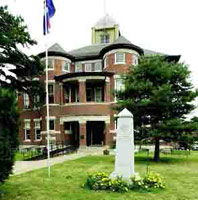
Today, Caldwell County boasts a population of 8,815 according to a 2020 census. It remains a small, tight-knit, agricultural community and the rural setting, and peaceful, quiet landscape are what keep many generations of families around to call it home.